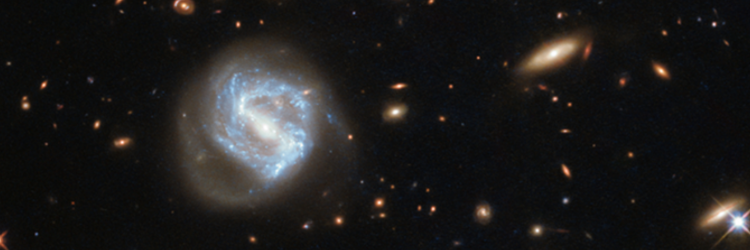AI’s Secret Equation to Weigh Galaxy Clusters
Researchers at Flatiron Institute used artificial intelligence (AI) to estimate the mass of colossal clusters of galaxies. By adding a simple term to an existing equation, scientists can produce far better mass estimates than previously possible. That means that scientists can calculate the fundamental properties of the galaxy clusters more accurately. The astrophysicists published their results in the Proceedings of the National Academy of Sciences.
Galaxy clusters are the most massive objects in the universe, and a single cluster can contain anything from hundreds to thousands of galaxies, plasma, hot gas, and dark matter.
Total mass is crucial in determining a galaxy cluster’s properties—but measuring it is difficult. Until now, scientists deduced the mass of a cluster from other observable quantities.
The team thought an AI tool called ‘symbolic regression’ might be a better approach than previous methods. The tool tries combinations of mathematical operators with various variables to see which equation best matches the data. They fed their AI program a state-of-the-art universe simulation containing many galaxy clusters. Their program then searched for and identified additional variables that might make the mass estimates more accurate. The researchers’ symbolic regression program provided a new equation that added a single new term to the existing equation. Working backward from the AI-generated equation, they found a physical explanation. Gas concentration correlates with the regions of galaxy clusters where mass inferences are less reliable, such as the cores of galaxies where supermassive black holes are. The equation improved mass inferences by downplaying the importance of those complex cores. Envision a galaxy cluster as a spherical doughnut; the new equation extracts the jelly at the center that can introduce errors. It instead concentrates on the doughy outskirts for more reliable mass inferences.
The researchers tested the AI discovery and found that the equation reduced the variability in galaxy cluster mass estimates by around 20 to 300% for large clusters compared with the currently used equation.

